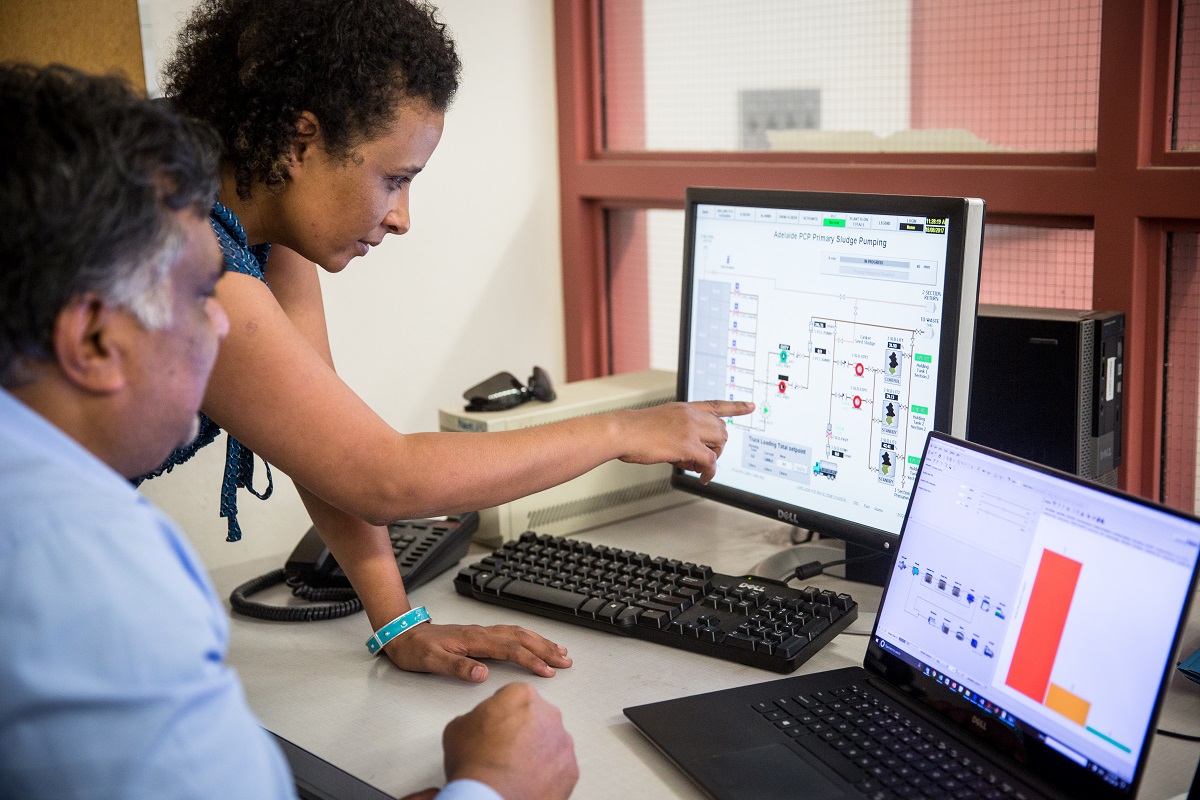From tackling green algae blooms in Lake Erie to providing safe water to communities in sub-Saharan Africa, water technology innovators in Southern Ontario are making all kinds of achievements possible. And in many cases, the driving force behind these advances is female. We’d like to introduce you to a few of these wave-making women.
Leading the (re)charge
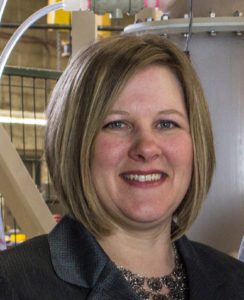
Christine Haas, President, Renix Inc.
While working on a contract for the VP of research at Western University, Christine Haas struck up a conversation with a chemical engineering professor. He was looking for someone to commercialize a new ion exchange platform the university had developed.
Haas was a perfect fit, with a background in chemical and biochemical engineering and business chops honed over more than a decade in industry. She founded Renix Inc. in 2009 and hasn’t looked back. “I knew it was going to be a challenge. And yeah, it was,” says Haas. “But it’s also a lot of fun too.”
Ion exchange uses tiny, ionically charged polymer beads to pull valuable or unwanted material out of liquids. It’s a highly targeted approach, but there’s one big problem: once the beads have loaded to their capacity, they need to be replaced or regenerated. Until now, that meant treating tanks of beads in batches.
Renix’s technology offers a better solution for mining companies, food processors and other businesses that recycle water. The system controls the movement of the beads, taking them to an unloading area where they are recharged and sent back into the water to continue the ion exchange process. The result is steady, uninterrupted treatment — saving both time and money.
Today, Renix has teamed up with a wastewater expert at Western University exploring new applications for their ion-exchange system. The project, funded through SOWC’s Advancing Water Technologies (AWT) program, aims to remove phosphorous from sewage and turn it into a valuable fertilizer. “We’ve never done work on municipal water,” says Haas. “So this is a fantastic chance for us to work with someone who has.”
Industry insights
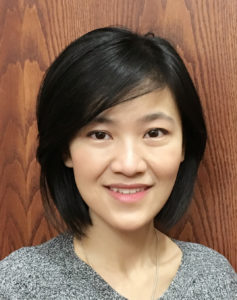
Cindy Hu, Senior Project Manager, A.U.G. Signals Ltd.
A.U.G. Signals is another company that values academic collaboration. The Toronto enterprise is currently involved in two AWT-funded projects. The first is a partnership with the University of Toronto to pilot a disinfection byproduct analyzer at a water treatment plant in Smith Falls. The analyzer uses photonic sensors to continuously monitor for cancer-causing trihalomethanes that can result from chlorine disinfection.
The second project is collaboration with researchers at Ryerson University to commercialize a nutrient analyzer developed to monitor farmland runoff. The portable, in-line devices will provide automated, near-real-time data on phosphate levels in watersheds, offering a cost-effective and time-saving alternative to the current process of manual sampling and lab testing.
The person overseeing both these projects — along with many others — is Cindy Dongxin Hu, A.U.G.’s Senior Project Manager of Environmental Monitoring and Quality Control. Although Hu’s PhD focussed on haemoglobin research, the University of Toronto graduate developed a passion for technology development.
In 2008, she obtained a post-doc fellowship scholarship to work at A.U.G. Signals, where she quickly discovered fundamental differences between industry and academia. “The first lesson I learned is you always have to respect the cost, and you always have a tight budget,” says Hu. “But it was exciting.”
Ten years on, Hu loves working in a small tech company where she works on the front lines of commercialization. “Every day I’m exposed to different ideas,” she says. “Every day is different.”
Small tech, global impact
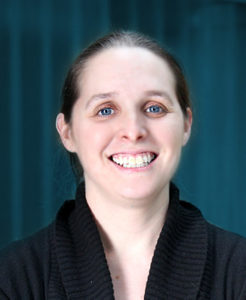
Amy Bilton, Assistant Professor, University of Toronto
Amy Bilton also enjoys diversity. The Mechanical and Industrial Engineering professor at the University of Toronto has worked on projects ranging from solar-powered water desalination systems in Saudi Arabia to water quality improvements for fish aquaculture in Southeast Asia.
So when the water tech company Formarum Inc. needed someone to help fine-tune their new self-powered disinfection device, tapping Bilton’s expertise in design, optimization, and fluid dynamics made perfect sense. “I’m a professor, but I think at heart I’m a designer/inventor,” she says.
Funded by SOWC, the project focuses on Formarum’s Dive Smart Sanitizer. The self-contained unit sits directly within a pipe and uses the movement of water to generate enough voltage to trigger an electrochemical process, ultimately creating chlorine from the sodium chloride ions in the water.
The technology nearly eliminates the need for harsh chemicals in swimming pools and makes disinfection simpler and more affordable. Formarum is also trialling the all-in-one system in Uganda to help kill disease-causing organisms in contaminated water sources. Looking ahead, Bilton will be launching a new collaboration with Formarum focused on harvesting energy from water systems.
“This is actually a really cool opportunity to work on new products which could potentially have a really big impact,” she says.
Models of success
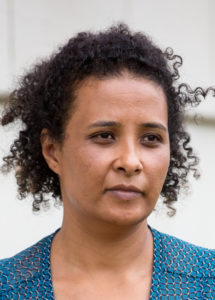
Martha Dagnew, Assistant Professor, Western University
Martha Dagnew knows all about impact. While completing her PhD in environmental engineering at the University of Waterloo, Dagnew was hired on as a research associate and then as a lead engineer with General Electric’s water and process technologies product development division.
She wasted little time making a name for herself, stepping up to tackle increasingly larger projects. “Once you’re in an engineering firm, it’s up to you,” she explains. “You work hard, you get rewarded.”
That hard work paid off, taking her to places like Singapore, the U.K. and the U.S. — and ultimately propelling her to lead the division’s wastewater product development team. During her time with GE, Dagnew helped moved several game-changing technologies from concept to commercialization, including the company’s Membrane Aerated Biofilm Reactor.
Today, as a professor at Western University, she collaborates with industry partners to improve the energy efficiency of wastewater treatment.
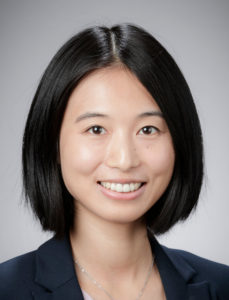
Zoe Li, Assistant Professor, McMaster University
This includes an SOWC-funded project with Hydromantis Environmental Software Solutions: a Hamilton-based company developing modeling software that simulates wastewater treatment processes. Dagnew sees the software as a powerful tool to help plants optimize their operations.
She isn’t the only academic involved. At McMaster University, Zoe Li is using weather forecasting, machine learning and statistical analysis to help Hydromantis add influent prediction capabilities to their simulation toolkit — a feature other modeling packages on the market don’t offer.
To validate their statistical analysis techniques, Li’s team mines loads of data on the myriad of factors that can influence quality and flow rates: from melting snow and temperature fluctuations to spikes in water use from weekend laundry chores.
Developing the data-driven tool is no small task. But for Li, the opportunity to create practical solutions to real-world problems makes it all worthwhile. Growing up in a developing country, the air pollution and water pollution she saw motivated her to pursue a career in environmental engineering. “I think it’s a privilege to work in this area,” she says.
Dagnew agrees. “It’s a job, but it’s a passion,” she says.


